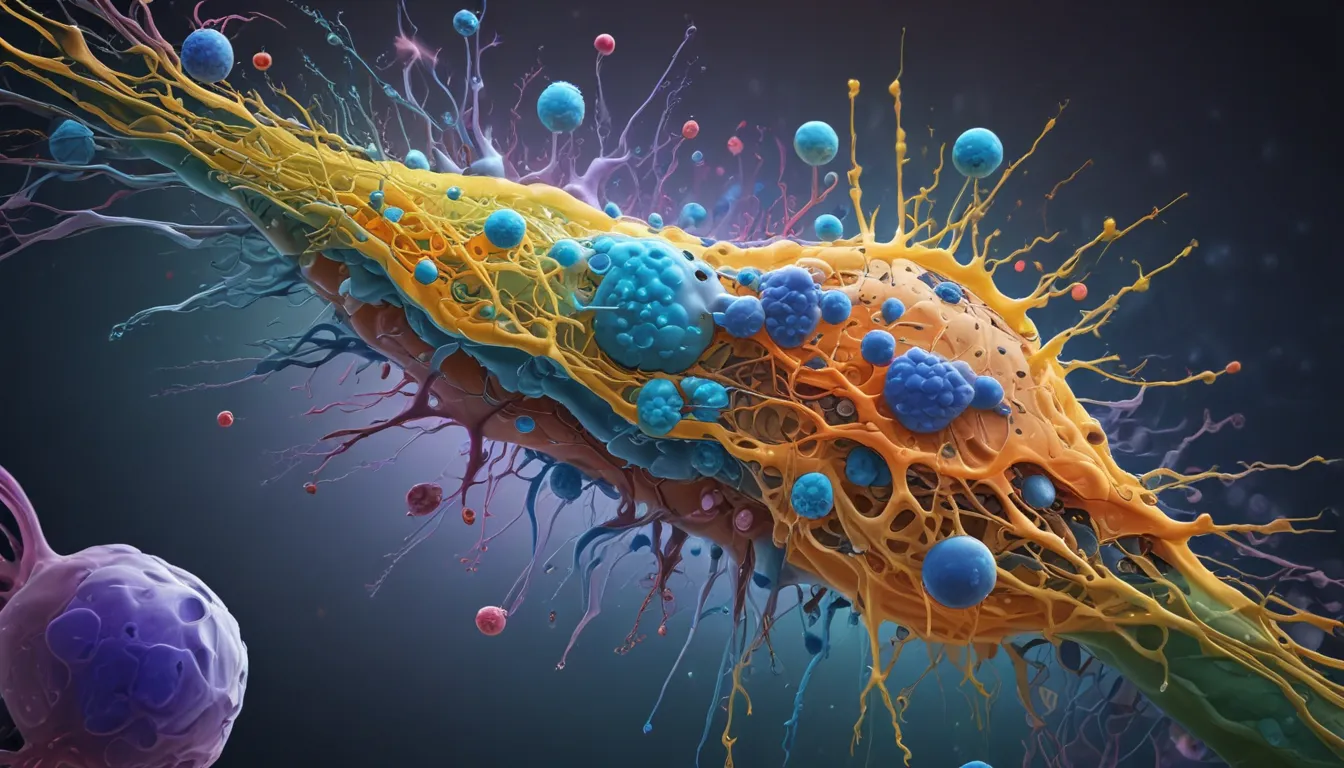A Note About Images: The images used in our articles are for illustration purposes only and may not exactly match the content. They are meant to engage readers, but the text should be relied upon for accurate information.
In the intricate world of cellular biology, receptor-mediated endocytosis stands out as a vital process that holds the key to numerous biological systems. This essential mechanism allows cells to internalize specific molecules, such as hormones, growth factors, and signaling molecules, through interaction with specialized receptors on the cell surface. By exploring the fascinating realm of receptor-mediated endocytosis, we uncover a treasure trove of information that sheds light on the inner workings of cells and their ability to maintain homeostasis and regulate essential functions.
The Intriguing World of Receptor-Mediated Endocytosis
Receptor-mediated endocytosis is a fundamental process that plays a critical role in cellular biology by selectively internalizing molecules from the extracellular environment. Unlike other forms of endocytosis, this process provides specificity by delivering only molecules bound to specific receptors, thus enhancing cellular efficiency. From its role in nutrient uptake to its involvement in cell signaling and immune function, receptor-mediated endocytosis is a multifaceted process essential for maintaining cellular balance and overall well-being.
Uncovering the Key Players and Mechanisms
Clathrin-Coated Pits and Adaptin Proteins
During receptor-mediated endocytosis, clathrin-coated pits form on the cell surface, facilitating the formation of vesicles that transport receptor-bound molecules into the cell. Adaptin proteins play a critical role in this process by connecting the clathrin-coated vesicles to specific receptors, ensuring efficient cargo uptake.
Receptor-Ligand Interactions and Recycling
The process relies on the binding of ligands, such as hormones or growth factors, to their respective cell surface receptors to initiate internalization. After internalization, receptors are recycled back to the cell surface, where they can participate in subsequent rounds of endocytosis and maintain cellular homeostasis.
Energy Expenditure and Regulation
The internalization of receptor-bound molecules requires ATP, the energy currency of cells, to drive the formation and movement of vesicles. This highly regulated process involves intricate control mechanisms ensuring proper receptor-ligand interactions, cargo selection, and vesicle formation.
Implications in Health and Disease
Receptor-mediated endocytosis plays a vital role in immune function by facilitating the internalization and processing of antigens for presentation to immune cells. However, dysregulation of this process has been linked to various diseases, including Alzheimer’s, cancer, and metabolic disorders, underscoring its importance in maintaining cellular balance.
Exploring Intriguing Facts About Receptor-Mediated Endocytosis
-
Essential for Nutrient Uptake: This process is crucial for the uptake of essential nutrients, such as cholesterol, iron, and vitamins, ensuring their transport into the cell.
-
Main Mechanism for Cell Signaling: Receptor-mediated endocytosis is essential for cell signaling, allowing for the internalization and subsequent activation of signaling molecules that bind to specific receptors.
-
Role in Neurotransmission: It is involved in the recycling of neurotransmitter receptors at synapses, enabling the efficient transmission of signals between neurons.
-
Influence of Membrane Cholesterol Levels: Cholesterol content in the cell membrane can affect the efficiency of receptor-mediated endocytosis, influencing the formation and stability of clathrin-coated pits.
-
Pathogen Entry and Cancer Cells: Some pathogens hijack this pathway to gain entry into host cells, while cancer cells often exhibit alterations in receptor-mediated endocytosis, leading to abnormal signaling and nutrient uptake.
Conclusion: Unlocking the Mysteries of Receptor-Mediated Endocytosis
In conclusion, receptor-mediated endocytosis is a captivating cellular process that serves as a cornerstone of cellular biology, allowing cells to selectively internalize specific molecules and maintain essential functions. By understanding the intricacies of this process and its implications in health and disease, researchers can unravel new insights and pave the way for targeted therapies. Receptor-mediated endocytosis continues to be a rich area of study that promises exciting discoveries in the field of biology.
FAQs About Receptor-Mediated Endocytosis
Q: What is receptor-mediated endocytosis?
A: Receptor-mediated endocytosis is a cellular process through which cells selectively internalize specific molecules or ligands from their external environment.
Q: How does receptor-mediated endocytosis work?
A: The process involves the interaction of ligands with specific receptor molecules present on the cell surface, leading to the formation of clathrin-coated pits and the subsequent internalization of ligand-receptor complexes into the cell.
Q: What is the role of receptor-mediated endocytosis in cells?
A: Receptor-mediated endocytosis plays a crucial role in various biological functions such as nutrient uptake, cell signaling, regulation of immune responses, and the clearance of pathogens.
Q: How is receptor-mediated endocytosis different from other forms of endocytosis?
A: Receptor-mediated endocytosis is a highly specific process that involves the binding of ligands to specific receptors, enabling cells to selectively internalize desired molecules. In contrast, other forms of endocytosis are generally non-selective and involve the bulk uptake of extracellular material.
Q: Can receptor-mediated endocytosis be disrupted?
A: Yes, receptor-mediated endocytosis can be disrupted or dysregulated, leading to various diseases. For example, defects in this process have been implicated in conditions like hypercholesterolemia and neurodegenerative disorders.
Explore the fascinating world of cellular biology with our in-depth guides on various biological processes, from embryonic stem cells to the complex world of signal transduction. Each fact on our site is contributed by real users like you, ensuring diverse insights and credible information. Trust in our commitment to quality and authenticity as you delve into the wonders of biology.






